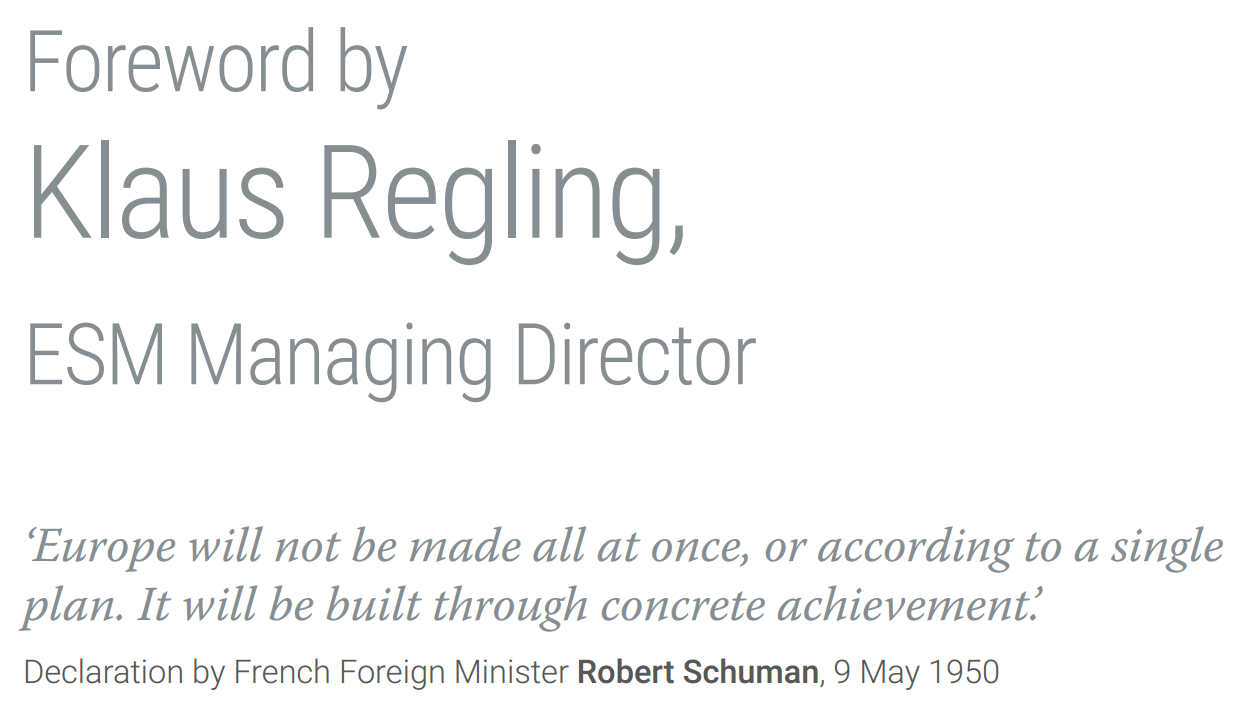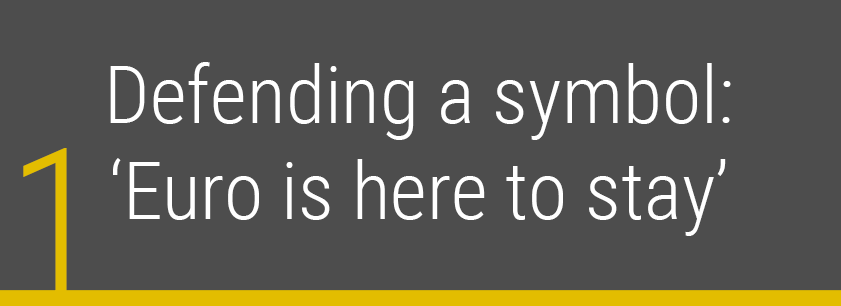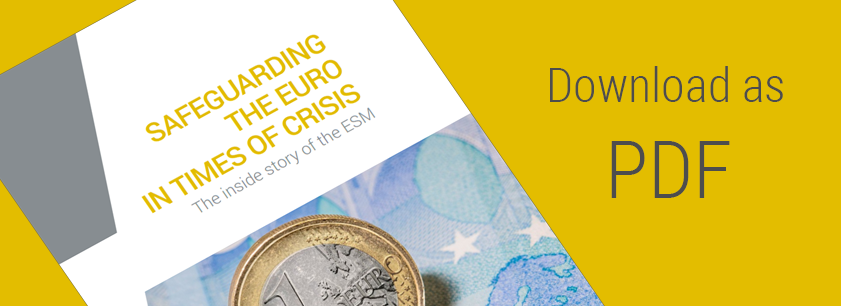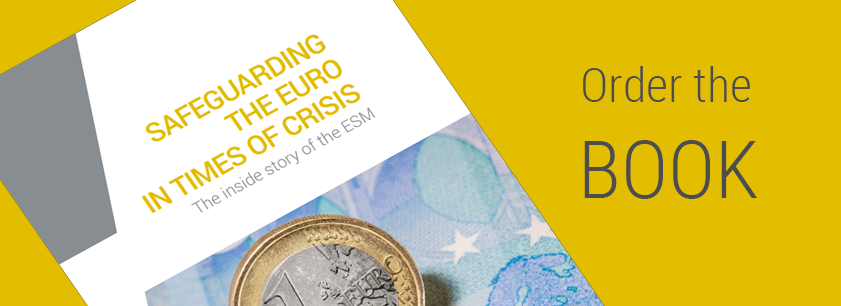Foreword by Klaus Regling - ESM Managing Director

It took a half century after Schuman’s generation embarked on the project of European integration for one of the most concrete achievements of all, the single currency, to become reality. This year, we mark both the 20th anniversary of the start of Economic and Monetary Union in 1999 and the 10th anniversary of the first signs of financial tumult in Greece in 2009 and the onset of the euro crisis.
In the policy response to the crisis, there were traces of Schuman’s thinking. As the financial and economic crisis spread from Greece to Ireland, Portugal, Spain, and eventually Cyprus, European leaders acted in the spirit of incremental progress – with a healthy dose of improvisation – that animated the post-World War II generation. It was a matter of providing rapid, conditional relief for financially impaired governments while building institutions to make the euro area more robust and less vulnerable over the longer term.
Europe’s rescue funds – the temporary European Financial Stability Facility (EFSF) and its permanent successor, the European Stability Mechanism (ESM) – were one of the products of the deliberations, often into the wee hours of the morning, of policymakers confronted with this unprecedented challenge. This book is the story of the EFSF and ESM, from the high-stake summits and Eurogroup meetings and endless technical and brainstorming sessions to the design and creation of a new international financial institution, built from scratch through the recruitment of professional staff, renting of office space, and setting up of systems.
The EFSF and ESM grew up in the heat of the crisis, scrutinised by nervous financial markets, a worried public, and concerned euro area country governments. Unsurprisingly, the rescue funds didn’t emerge in their mature form overnight. The EFSF’s guarantee-based financing structure was the imperfect product of compromise, and when it began operations in mid-2010, its sole ambition was to lend to distressed governments. Over time, the EFSF was equipped with additional tools. These instruments were later transferred to the ESM, which rests on a sturdier, capital-backed foundation.
What pulled the monetary union back from the precipice was, ultimately, the willingness of the people of programme countries to support difficult policy choices for the sake of a better future, and the solidarity of the other member states of the euro area, even amid fierce domestic debate. But this account would be incomplete without the women and men of the EFSF and ESM. This is their history, too: how an international financial organisation, rooted in banking and the markets yet infused with a clear public sector mission, became an essential part of the euro area architecture over a few short years.
This chronicle embeds the story of the two rescue mechanisms in the broader history of the crisis, drawing on first-hand insights from interviews with all the main actors, among them political leaders, finance ministers, and central bankers. It takes the reader inside the critical discussions, from Athens to Berlin, Dublin to Brussels, Washington DC, to Luxembourg – and many places in between. Restoring stability to the euro required hard work on multiple fronts, but one lesson that resonates in these pages is that everyone was working towards an identical goal: defending the currency, one step at a time.
The period between 2010, when the first rescue fund was established, and 2018, when Greece became the last country to successfully exit its financial programme, was a defining phase in the history of European integration. I believe this will become increasingly clear as this period retreats into the past and is studied in greater detail by journalists, scholars, and the general public. I hope this book will be an informative contribution.


